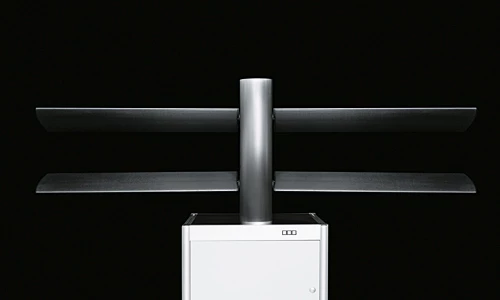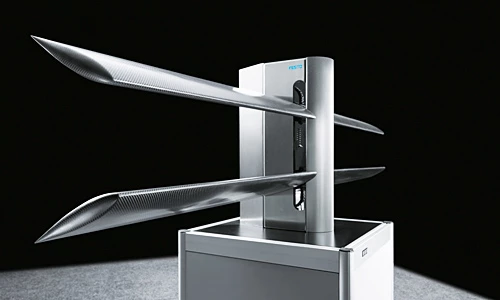Back in 2011, Festo created a natural-flight mimicking bionic seagull with flapping wings dubbed SmartBird. The company is now looking to apply similar principles in order to convert wind power into electricity with its DualWingGenerator system.
The DualWingGenerator system is comprised of a vertical column supporting a bottom and top pair of "wings" that measure 250 cm (98.4 in) across. The pairs are fitted to separate sliders and then driven up and down as the air flows across the surfaces.
As the wind blows, the wings move in opposing directions, the bottom wings moving upwards as the top move downwards, or vice versa. This motion is then converted into rotary movement inside the column using two timing belts and two free wheels. The rotary force is then transferred to an electricity generator to complete the kinetic to electricity power transformation.
Festo tested the effectiveness of the DualWingGenerator alongside two similar-sized conventional wind turbines. The team says that the system achieved "remarkableoutputs compared to small wind power stations," observing a 45 percent fluid-mechanical effectiveness level when used in wind speeds between 4 and 8 meters per second (with the maximum, or Betz' limit being 59.3 percent). The system also demonstrated a marginally higher energy output when used at similarly low wind speeds.

While the output of the DualWingGenerator, like all wind turbines, is related to the strength of the wind, Festo aims to lessen its dependence on the elements with what it describes as intelligent control technology.
This technology is designed to enable the system to self-optimize and adapt to different wind conditions. It involves two servomotors and a sensor built into the central column to dictate the angle, amplitude and frequency of the flapping.
While there is no indication of when or if the system might reach the marketplace, Festo is continuing to develop the technology and cites potential applications such as small scale installations on buildings or for generating compressed air or a water.
Source: Festo








